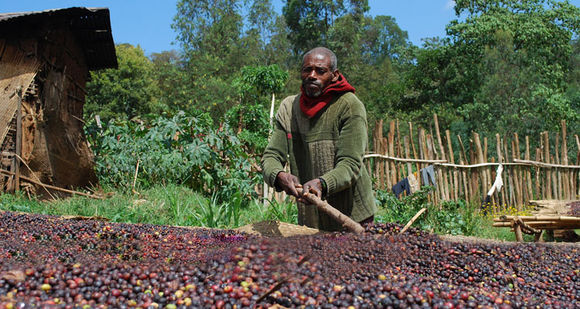How does China Coffee Network mix Coffee Coffee recipe Coffee Coffee Colombian Coffee Brazilian Coffee
When mixing coffee, you can first learn about three very preliminary coffee bean mixing methods.
First, first determine the basic coffee beans to be used when mixing, use this coffee bean as the center, and further choose other kinds rich in personality to reconcile the overall flavor.
Second, you can try to combine coffee beans of the opposite nature, which can add a more special aroma of coffee.
Third, combine beans with similar properties and integrate them, and then further select beans rich in various flavors to add special aroma to the whole coffee.
In order to actually use these combinations, we must first understand the flavor of dozens of individual coffees, and each coffee shop will spell out different proportions of coffee beans according to its own characteristics. Here are several representative mixing proportions. Of course, you can also challenge yourself to try to find the proportion you like.
I. sour espresso blending: 30% in Colombia, 60% in Brazil, 10% in Guatemala
Second, the general mixed coffee blending method: Colombia 30%, Brazil 60%, Robusta 10%.
Third, bitterness mixed commercial coffee blending method: Colombia 30%, Brazil 30%, Kilimanjaro 30%, Robusta 10%.
There are two spelling methods for spelling beans: first bake, then mix and then bake, also known as cooked and cooked, which is a greater test for bakers; the purpose of raising the mixed beans for a few more days is to make the beans blend and have a balanced flavor; cooked beans usually take about a week; raw and mixed beans can be used in 3-4 days, because different beans are already affecting each other when baking.

Important Notice :
前街咖啡 FrontStreet Coffee has moved to new addredd:
FrontStreet Coffee Address: 315,Donghua East Road,GuangZhou
Tel:020 38364473
- Prev

Coffee blending formula blending coffee Colombian coffee Brazilian coffee how to mix coffee
Blended coffee although some fixed varieties of coffee can be drunk directly as a single coffee, but most of the coffee has more or less defects in flavor. For example, there is no special flavor, lack of depth, not strong enough, or a certain taste is too strong. In order to make up for these deficiencies, it is necessary to combine several kinds of coffee beans with different characteristics to create harmony.
- Next

China Coffee Network recommends Colombian coffee beans history mocha round bean honey to treat South American beans
The history of coffee cultivation in Colombia can be traced back to the Spanish colonial era in the 16th century, and there are many theories about the history of coffee in Colombia: first, it is said to come from the island of Haiti in the Caribbean and by water through El Salvador in Central America. Second: in 1808, a priest introduced coffee beans to Colombia for the first time from the French Antilles via Venezuela. Its
Related
- Does Rose Summer choose Blue, Green or Red? Detailed explanation of Rose Summer Coffee plots and Classification in Panamanian Jade Manor
- What is the difference between the origin, producing area, processing plant, cooperative and manor of coffee beans?
- How fine does the espresso powder fit? how to grind the espresso?
- Sca coffee roasting degree color card coffee roasting degree 8 roasting color values what do you mean?
- The practice of lattes: how to make lattes at home
- Introduction to Indonesian Fine Coffee beans-- Java Coffee producing area of Indonesian Arabica Coffee
- How much will the flavor of light and medium roasted rose summer be expressed? What baking level is rose summer suitable for?
- Introduction to the characteristics of washing, sun-drying or wet-planing coffee commonly used in Mantenin, Indonesia
- Price characteristics of Arabica Coffee Bean Starbucks introduction to Manning Coffee Bean Taste producing area Variety Manor
- What is the authentic Yega flavor? What are the flavor characteristics of the really excellent Yejasuffi coffee beans?

